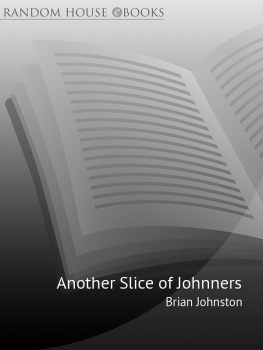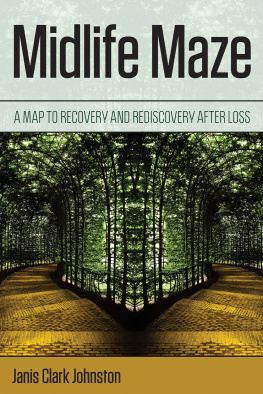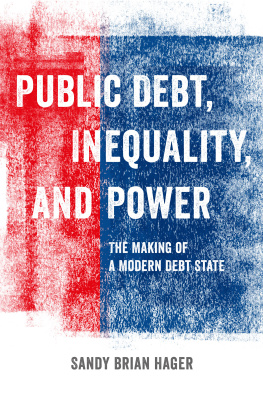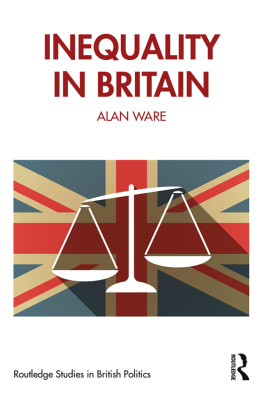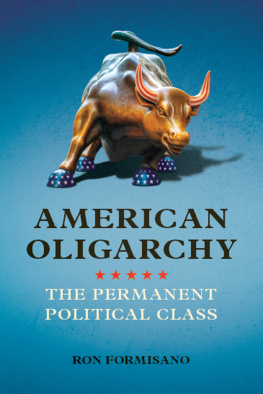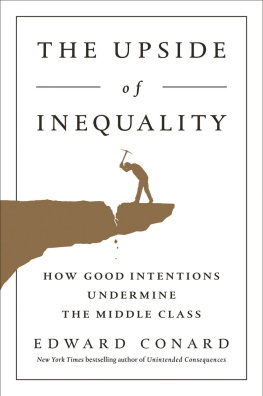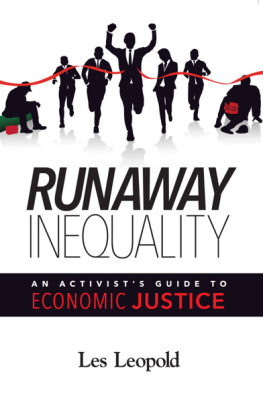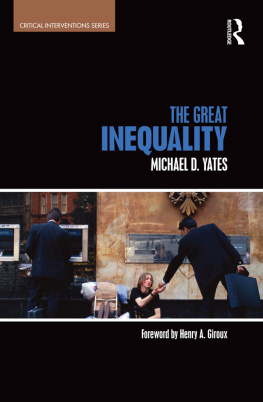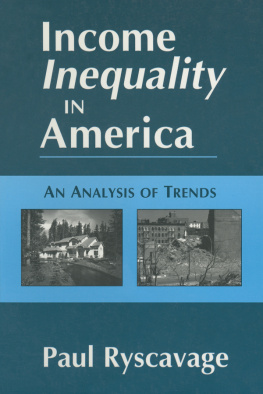DIVIDED
ALSO BY DAVID CAY JOHNSTON
The Fine Print: How Big Companies Use
Plain English to Rob You Blind
Free Lunch: How the Wealthiest Americans
Enrich Themselves at Government Expense
and Stick You with the Bill
Perfectly Legal: The Covert Campaign to Rig
Our Tax System to Benefit the Super-Rich
and Cheat Everybody Else
Temples of Chance: How America Inc.
Bought Out Murder Inc. to Win Control
of the Casino Business


Source notes for previously published material appear at the end of all relevant chapters. Chapters without source notes were written especially for this volume.
2014 by David Cay Johnston
All rights reserved.
No part of this book may be reproduced, in any form, without written permission from the publisher.
Requests for permission to reproduce selections from this book should be mailed to:
Permissions Department, The New Press, 120 Wall Street, 31st floor, New York, NY 10005.
Published in the United States by The New Press, New York, 2014
Distributed by Perseus Distribution
LIBRARY OF CONGRESS CATALOGING-IN-PUBLICATION DATA
Divided : the perils of our growing inequality / edited by David Cay Johnston.
pages cm
ISBN 978-1-59558-944-6 (e-book) 1. Equality--United States. 2. Income distribution--United States. 3. United States--Social policy--21st century. I. Johnston, David, 1948- editor of compilation.
HM821.D585 2014
305--dc23
2013041718
The New Press publishes books that promote and enrich public discussion and understanding of the issues vital to our democracy and to a more equitable world. These books are made possible by the enthusiasm of our readers; the support of a committed group of donors, large and small; the collaboration of our many partners in the independent media and the not-for-profit sector; booksellers, who often hand-sell New Press books; librarians; and above all by our authors.
www.thenewpress.com
Book design and composition by Bookbright Media
This book was set in Minion Pro
10 9 8 7 6 5 4 3 2 1
CONTENTS
I n 2001, soon after George W. Bush was inaugurated, I called the White House press office for comment on the latest IRS income data. The deputy spokesperson expressed disbelief at the official figures I read, so much so that I asked, What do you think is the median income shown on tax returns in America? The answer: $250,000. The actual figure at the time: $28,000.
Misperceptions about affluence and poverty continue to infect our politics, even as the massive chasm that divides the very richest Americans from everyone else has become the defining story of our time. No natural forces determine income, wealth, and the quality of human life. We make the decisions about who will prosper and who will notor we let other people make them for us. In societies with democratically elected governments, we are the captains of our fate, because when we elect politicians we choose their policies as carried out by presidents and governors, Congress and legislatures, and those they appoint as judges and regulators. For now, what we have chosen is extreme inequality, the worst by far of any nation with a modern economy.
In choosing inequality, we have opted to give up a broad and strong middle class with rising expectations, growing incomes, broadening home ownership, and access to higher education. In choosing health care inequality, we have decided to dampen millions of spirits, deny a chance at success to millions of children, and turn many hardworking taxpayers into people who become permanently disabled and thus a burden on society, simply because they cannot get corrective surgery or drugs to control their conditions and return to productive lives. We have created a society in which all the nations economic gains flow to the top and the vast majority sees income stagnation or decline. We have embraced bankruptcy, debt, long bouts of joblessness, and flat or shrinking paychecks as the new normal. And we have lavished cash, tax cuts, and subtle subsidies on the richest among us, whose prosperity continues to blossom.
It was not always this way.
From the end of World War II until the early 1970s, the vast majority of Americans enjoyed steadily improving lives. Wages increased and a growing share of workers benefited from steady employment with fringe benefits such as health care, paid vacations, and pensions. The number of jobs grew steadily, especially for work requiring a college education or advanced degrees, as taxpayer investments in basic research produced tangible products and life-extending services. Many more people became home owners, often finding that their monthly outlay was less than when they rented. Poverty remained a problem, but it was in decline, especially for older Americans. For most families with children one income was enough. Americans had debts, but they grew in tandem with the economy. Cars were typically bought on three-year loans, not the five-, six-, and seven-year loans common today. The real income reported on federal tax returns by the vast majority of Americans, the 90 percent, doubled between the end of the war and 1973.
Then the lives of the vast majority stopped getting better and, after a few years, began a long and painful slide backward. Unions dwindled, shifting the power to set pay from organized groups of workers with advice from market experts to individual employees negotiating, or more often just accepting, pay set by employers. The rising costs of health care diverted more compensation from cash wages to insurance premiums. Trade rules that often favored other nations destroyed many well-paying manufacturing jobs, including more than 50,000 factories and 2.8 million jobs offshored to China.
As a result, the vast majoritys average income rose above the 1973 level only four timesin 1999, 2000, 2001, and 2007and even then added only the equivalent of one additional weeks income to each year. By 2012 the average income of the vast majority had shrunk to the equivalent of 45 weeks of 1973 incomea 13 percent decline to $30,997 from $35,584 in 1973, expressed in 2012 dollars.
Between 1998 and 2011, the median weekly wagehalf make more, half lessstagnated between $533 and $546 in 2012 dollars, then dropped in 2012 to $529 and change, or $27,519 for the year. Almost a third of the 153.6 million Americans with a job at any time in 2012 made less than $15,000, averaging just $6,100.
In recent years nearly all of the income growth has been in jobs paying more than $75,000about one in every eight jobs. At the top, pay soared. In 2012 the number of people whose jobs paid cash wages of $5 million or more grew by 27 percent to 8,982 workers while their inflation-adjusted combined pay increased by 40 percent over 2011.
Very highly paid jobs have grown to such a degree that, in 1994, the Social Security Administration changed its top compensation category from more than $5 million to more than $20 million. In 1997 it lifted the top level again, to more than $50 million.
As wage growth slowed and then stoppedor even fell backfor millions of workers and the 90 percents average total income shrank, debts rose and bankruptcies grew much faster than population. Since 1980, there have been 32 million personal bankruptcy filings in a nation with an average of about 100 million households, meaning that one in roughly three households has sought refuge from creditors.
At the top it was an entirely different story. Here we do not find the storied captains of industry who risk their capital to create jobs so much as executives, entertainers (from baseball players to pop singers), and other working wealthy, often salaried. The top 1 percents average income certainly grew between the end of the war and 1973 along with everyone elses, but while the vast majoritys income doubled, the top 1 percents income grew by only a third. In contrast, from 1973 until 2012, the years when the vast majority saw their incomes slip, the top 1 percent saw their average income more than double, rising 153 percent to more than $1 million. The top 1 percent made almost thirteen times the average of the 90 percent in 1973, but by 2012 the ratio was 41 to 1.
Next page



